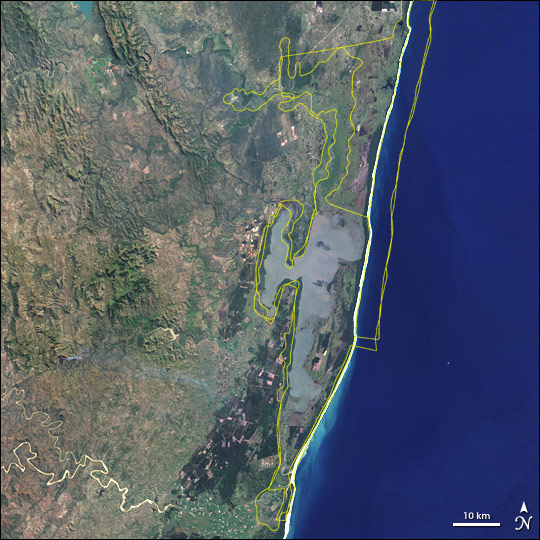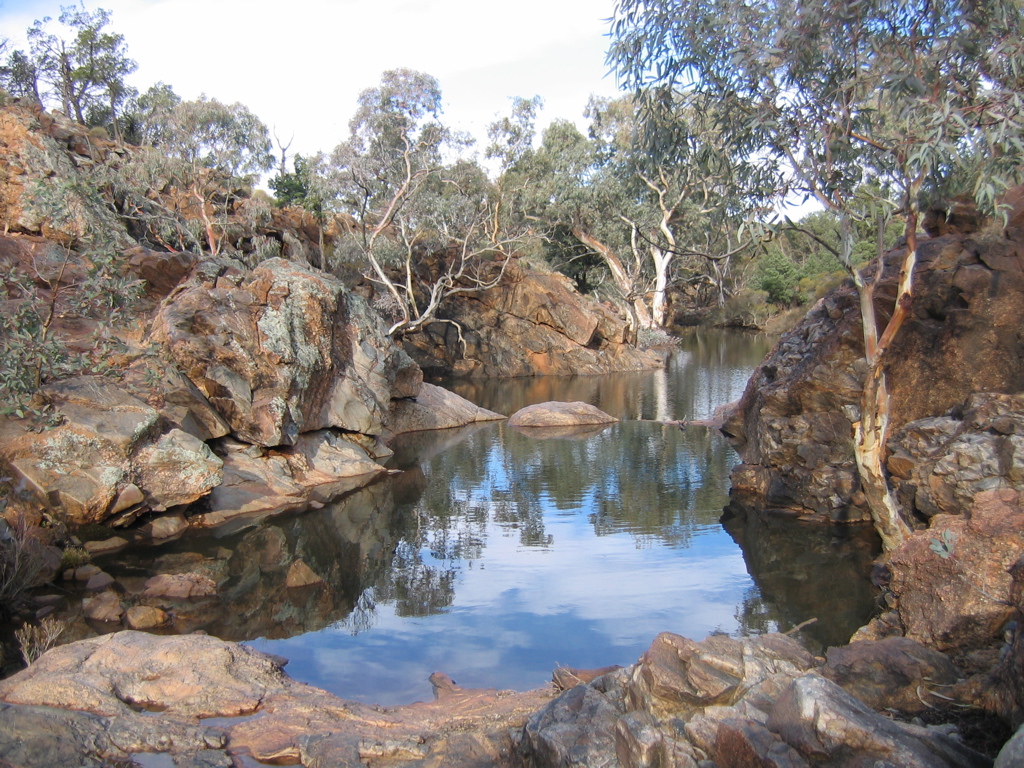|
Potamonautes Isimangaliso
''Potamonautes isimangaliso'' is a species of freshwater crustacean in the family Potamonautidae. It is endemic to iSimangaliso Wetland Park, South Africa. Its natural habitat are the ephemeral wetlands fringing the western shores of False Bay. Molecular DNA analyses were required to distinguish it from the similar and rather variable '' P. lividus'', which occurs further inland. Description It most closely resembles '' P. lividus'' but its mtDNA differs from the former by between 7.4 and 7.8%. It is further distinguished by its unique suite of carapace A carapace is a Dorsum (biology), dorsal (upper) section of the exoskeleton or shell in a number of animal groups, including arthropods, such as crustaceans and arachnids, as well as vertebrates, such as turtles and tortoises. In turtles and tor ... characters, besides its colouration and size. Habitat It occurs in oxygen-poor, fresh ephemeral pans. References Fauna of South Africa Potamoidea Freshwater crustaceans of ... [...More Info...] [...Related Items...] OR: [Wikipedia] [Google] [Baidu] |
Crustacean
Crustaceans (Crustacea, ) form a large, diverse arthropod taxon which includes such animals as decapods, seed shrimp, branchiopods, fish lice, krill, remipedes, isopods, barnacles, copepods, amphipods and mantis shrimp. The crustacean group can be treated as a subphylum under the clade Mandibulata. It is now well accepted that the hexapods emerged deep in the Crustacean group, with the completed group referred to as Pancrustacea. Some crustaceans (Remipedia, Cephalocarida, Branchiopoda) are more closely related to insects and the other hexapods than they are to certain other crustaceans. The 67,000 described species range in size from '' Stygotantulus stocki'' at , to the Japanese spider crab with a leg span of up to and a mass of . Like other arthropods, crustaceans have an exoskeleton, which they moult to grow. They are distinguished from other groups of arthropods, such as insects, myriapods and chelicerates, by the possession of biramous (two-parted) limbs, and by th ... [...More Info...] [...Related Items...] OR: [Wikipedia] [Google] [Baidu] |
Potamonautidae
Potamonautidae is a family of freshwater crabs endemic to Africa, including the islands of Madagascar, the Seychelles, Zanzibar, Mafia, Pemba, Bioko, São Tomé, Príncipe and Sherbro Island. It comprises 18 extant genera and 138 extant species. Fossil remains dating from the Late Miocene period have been attributed to the family Potamonautidae. It comprises the following subfamilies and genera: ; Deckeniinae Ortmann, 1897 *'' Deckenia'' Hilgendorf, 1869 *'' Seychellum'' Ng, Števčić & Pretzmann, 1995 ; Hydrothelphusinae Bott, 1955 *'' Afrithelphusa'' Bott, 1969 *'' Boreas'' Cumberlidge & von Sternberg, 2002 *'' Globonautes'' Bott, 1959 *'' Hydrothelphusa'' A. Milne-Edwards, 1872 *'' Louisea'' Cumberlidge, 1994 *'' Madagapotamon'' Bott, 1965 *'' Malagasya'' Cumberlidge & von Sternberg, 2002 *''Marojejy'' Cumberlidge, Boyko & Harvey, 2002 *'' Skelosophusa'' Ng & Takeda, 1994 ; Potamonautinae Bott, 1970 *'' Erimetopus'' Rathbun, 1894 *''Foza'' Dai & Bo, 1994 *'' Liberonautes'' Bo ... [...More Info...] [...Related Items...] OR: [Wikipedia] [Google] [Baidu] |
Endemism
Endemism is the state of a species being found in a single defined geographic location, such as an island, state, nation, country or other defined zone; organisms that are indigenous to a place are not endemic to it if they are also found elsewhere. For example, the Cape sugarbird is found exclusively in southwestern South Africa and is therefore said to be ''endemic'' to that particular part of the world. An endemic species can be also be referred to as an ''endemism'' or in scientific literature as an ''endemite''. For example '' Cytisus aeolicus'' is an endemite of the Italian flora. '' Adzharia renschi'' was once believed to be an endemite of the Caucasus, but it was later discovered to be a non-indigenous species from South America belonging to a different genus. The extreme opposite of an endemic species is one with a cosmopolitan distribution, having a global or widespread range. A rare alternative term for a species that is endemic is "precinctive", which applies to ... [...More Info...] [...Related Items...] OR: [Wikipedia] [Google] [Baidu] |
ISimangaliso Wetland Park
iSimangaliso Wetland Park (previously known as the Greater St. Lucia Wetland Park) is situated on the east coast of KwaZulu-Natal, South Africa, about 235 kilometres north of Durban by road. It is South Africa's third-largest protected area, spanning 280 km of coastline, from the Mozambican border in the north to Mapelane south of the Lake St. Lucia estuary, and made up of around 3,280 km2 of natural ecosystems, managed by the iSimangaliso Authority. The park includes: * Lake St. Lucia * St. Lucia Game Reserve * False Bay Park * Kosi Bay * Lake Eteza Nature Reserve * Lake Sibhayi * St. Lucia Marine Reserve * St. Lucia Marine Sanctuary * Sodwana Bay National Park * Mapelane Nature Reserve * Maputaland Marine Protected Area * Cape Vidal * Ozabeni * Mfabeni * Tewate Wilderness Area * Mkuze Game Reserve The park was previously known as the Greater St. Lucia Wetland Park, but was renamed effective 1 November 2007. The word ''isimangaliso'' me ... [...More Info...] [...Related Items...] OR: [Wikipedia] [Google] [Baidu] |
South Africa
South Africa, officially the Republic of South Africa (RSA), is the southernmost country in Africa. It is bounded to the south by of coastline that stretch along the South Atlantic and Indian Oceans; to the north by the neighbouring countries of Namibia, Botswana, and Zimbabwe; and to the east and northeast by Mozambique and Eswatini. It also completely enclaves the country Lesotho. It is the southernmost country on the mainland of the Old World, and the second-most populous country located entirely south of the equator, after Tanzania. South Africa is a biodiversity hotspot, with unique biomes, plant and animal life. With over 60 million people, the country is the world's 24th-most populous nation and covers an area of . South Africa has three capital cities, with the executive, judicial and legislative branches of government based in Pretoria, Bloemfontein, and Cape Town respectively. The largest city is Johannesburg. About 80% of the population are Black South Afri ... [...More Info...] [...Related Items...] OR: [Wikipedia] [Google] [Baidu] |
Ephemeral Wetland
Ephemerality (from the Greek word , meaning 'lasting only one day') is the concept of things being transitory, existing only briefly. Academically, the term ephemeral constitutionally describes a diverse assortment of things and experiences, from digital media to types of streams. "There is no single definition of ephemerality". With respect to unique performances, for example, it has been noted that " hemerality is a quality caused by the ebb and flow of the crowd's concentration on the performance and a reflection of the nostalgic character of specific performances". Because different people may value the passage of time differently, ephemerality may be a relative, perceptual concept: "In brief, what is short-lived may not be the object itself, but the attention we afford it".Ronald Beiner, ''Political Philosophy: What It Is and Why It Matters'' (2014), p. 10. Ephemerality and nature Geographical features An ephemeral stream is that which only exists following precipitatio ... [...More Info...] [...Related Items...] OR: [Wikipedia] [Google] [Baidu] |
False Bay Park
250px, False Bay False Bay Park ( af, Valsbaai-natuurreservaat), a Ramsar site wetland since 2015, is a nature reserve that protects the western shores of the freshwater bay, False Bay, and is situated near the coast of northern KwaZulu-Natal, South Africa. False Bay is connected to Lake St. Lucia and both are included in the iSimangaliso Wetland Park. . It covers 1,500 hectares and is located at 34° 4′ S, 18° 30′ E. = Mammals Significant populations can be found here of the following mammals: hippopomatus, African clawless otter, marsh mongoose, Cape grysbok, steenbok, Southern African vlei rat (''Otomys irroratus''), Cape genet (''Genetta tigrina''}, and Cape gray mongoose. Birds A large variety of bird species can be found here: little stint, ruff, pied avocet, common tern, greater flamingo, and great white pelican. Gallery image:Potamonautes isimangaliso live.jpg, The western shores are home to the crustacean '' P. isimangaliso'' image:Annals of the South Africa ... [...More Info...] [...Related Items...] OR: [Wikipedia] [Google] [Baidu] |
Potamonautes Lividus
''Potamonautes lividus'', also known as the blue river crab, is a species of decapod in the family Potamonautidae. ''P. lividus'' is endemic to the country of South Africa in a area of 200 kilometers squared. The species prefers inland freshwater bodies in wetlands, bogs, marshes, freshwater swamp forests and peatlands ( mire). P. livisus is found most often in the province Kwa-Zulu Natal in South Africa with the species also living in Richards bay, Ntambanana, Mtubatuba and uncoifirmed sighting in the Amatikulu river which if confirmed, represents the southern most members of the Potamonautes lividus species. The IUCN The International Union for Conservation of Nature (IUCN; officially International Union for Conservation of Nature and Natural Resources) is an international organization working in the field of nature conservation and sustainable use of natu ... conservation status of ''Potamonautes lividus'' is "VU" or vulnerable. The species faces a high risk of ... [...More Info...] [...Related Items...] OR: [Wikipedia] [Google] [Baidu] |
MtDNA
Mitochondrial DNA (mtDNA or mDNA) is the DNA located in mitochondria, cellular organelles within eukaryotic cells that convert chemical energy from food into a form that cells can use, such as adenosine triphosphate (ATP). Mitochondrial DNA is only a small portion of the DNA in a eukaryotic cell; most of the DNA can be found in the cell nucleus and, in plants and algae, also in plastids such as chloroplasts. Human mitochondrial DNA was the first significant part of the human genome to be sequenced. This sequencing revealed that the human mtDNA includes 16,569 base pairs and encodes 13 proteins. Since animal mtDNA evolves faster than nuclear genetic markers, it represents a mainstay of phylogenetics and evolutionary biology. It also permits an examination of the relatedness of populations, and so has become important in anthropology and biogeography. Origin Nuclear and mitochondrial DNA are thought to be of separate evolutionary origin, with the mtDNA being derived from t ... [...More Info...] [...Related Items...] OR: [Wikipedia] [Google] [Baidu] |
Carapace
A carapace is a Dorsum (biology), dorsal (upper) section of the exoskeleton or shell in a number of animal groups, including arthropods, such as crustaceans and arachnids, as well as vertebrates, such as turtles and tortoises. In turtles and tortoises, the underside is called the plastron. Crustaceans In crustaceans, the carapace functions as a protective cover over the cephalothorax (i.e., the fused head and thorax, as distinct from the abdomen behind). Where it projects forward beyond the eyes, this projection is called a rostrum (anatomy), rostrum. The carapace is Calcification, calcified to varying degrees in different crustaceans. Zooplankton within the phylum Crustacea also have a carapace. These include Cladocera, ostracods, and Isopoda, isopods, but isopods only have a developed "cephalic shield" carapace covering the head. Arachnids In arachnids, the carapace is formed by the fusion of prosomal tergites into a single Plate (animal anatomy), plate which carries the e ... [...More Info...] [...Related Items...] OR: [Wikipedia] [Google] [Baidu] |
Fauna Of South Africa
The fauna of South Africa is diverse and largely typical of the ecosystems in Africa. South Africa is ranked sixth out of the world's 17 megadiverse countries. Many endemic species are unique to South Africa. The country is among the world leaders in conservation, but at the time wildlife is threatened by poaching and canned hunting. Habitats The topography and geology of South Africa is extremely varied, resulting in a wide variety of habitats. Due to this, South Africa enjoys high biodiversity, and is ranked sixth out of the world's seventeen megadiverse countries. In the extreme northwest of the country is true desert, which is the southernmost end of the Namib desert, a desert that is at least 55 million years old, making it the oldest desert in the world. This arid corner intergrades into the extensive semi-arid Karoo found across much of South Africa, covering the Northern Cape and into parts of the Western Cape, Eastern Cape and the Free State. This biome used to be extens ... [...More Info...] [...Related Items...] OR: [Wikipedia] [Google] [Baidu] |

.jpg)




